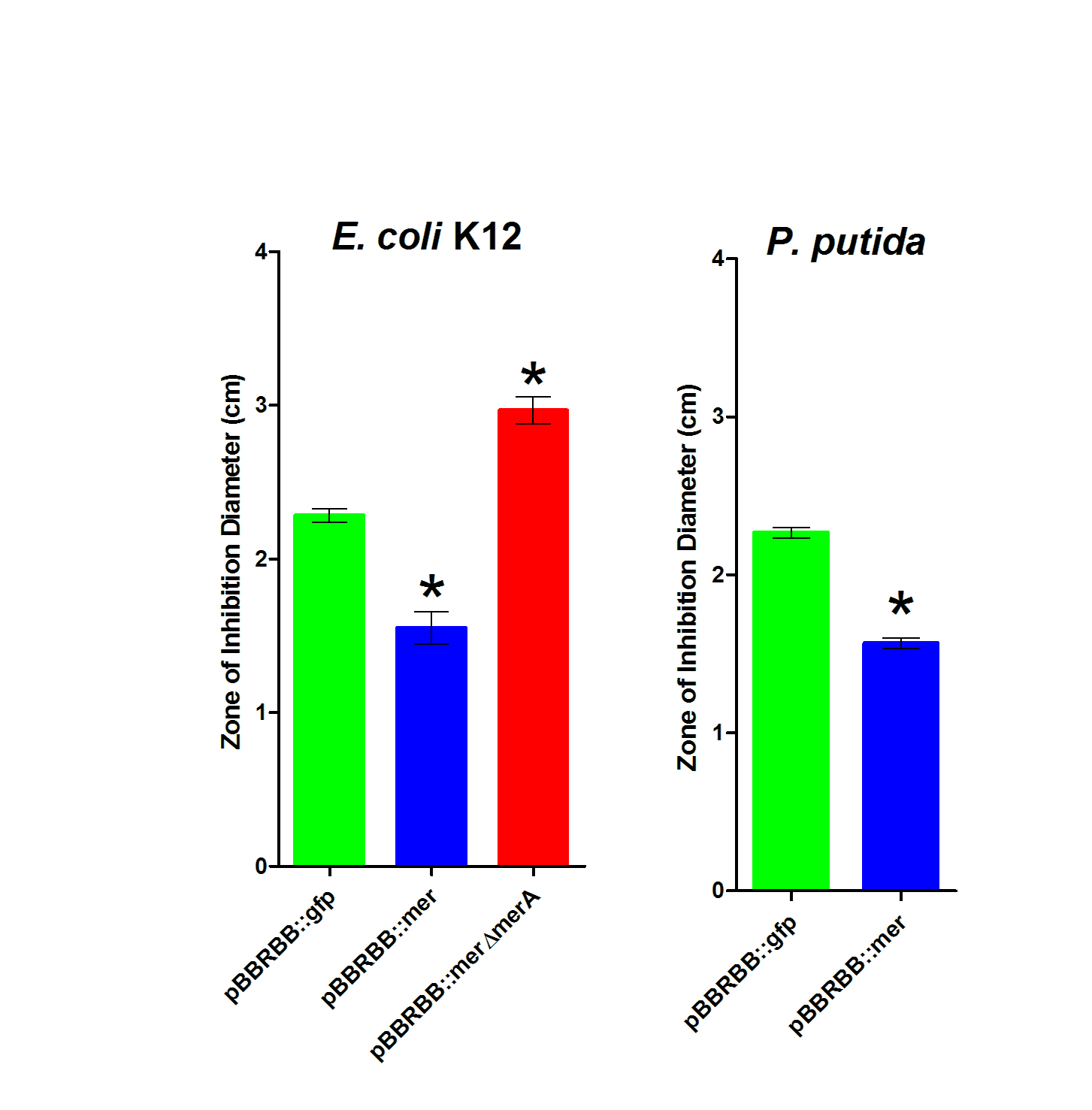Difference between revisions of "Part:BBa K1420003"
| Line 7: | Line 7: | ||
MerP is not essential for Hg(II) uptake, as MerT can also do much of the same work. However, there is the possibility of a Cysteine mutation on MerT which blocks Hg(II) uptake, this mutation cannot be found on MerP making it a redundant periplasmic transporter. If the MerP protein is expressed alone, it will revert to an oxidized state which is less stable than the reduced state it is found in when expressed as part of the greater Mer operon. In the periplasm, MerP competes with thiol-mediated redox proteins for Hg(II). Like periplasmic nutrient transporters, MerP is the most abundantly synthesized subunit its operon due to it's role in periplasmic Hg(II) transport. | MerP is not essential for Hg(II) uptake, as MerT can also do much of the same work. However, there is the possibility of a Cysteine mutation on MerT which blocks Hg(II) uptake, this mutation cannot be found on MerP making it a redundant periplasmic transporter. If the MerP protein is expressed alone, it will revert to an oxidized state which is less stable than the reduced state it is found in when expressed as part of the greater Mer operon. In the periplasm, MerP competes with thiol-mediated redox proteins for Hg(II). Like periplasmic nutrient transporters, MerP is the most abundantly synthesized subunit its operon due to it's role in periplasmic Hg(II) transport. | ||
| + | |||
| + | [[File:MNiGEM_ZOI_MerP.jpg|inline|400px]] | ||
| + | |||
<!-- Add more about the biology of this part here | <!-- Add more about the biology of this part here | ||
Revision as of 23:44, 9 October 2014
MerP, mercuric transport protein periplasmic component
MerP is a 72 amino acid periplasmic membrane protein. The merP protein functions as a monomer, binding a single Hg(II) ion at the two conserved cysteine residues. These Cysteines define the metal binding motif of MerP. Similar motifs are also found in other proteins that are involved in the transportation of thiophilic metal cations. The MerP Cysteine residues uptake Hg(II) ions and remove any attached ligands before passing the ion to the MerT transmembrane protein.
MerP is not essential for Hg(II) uptake, as MerT can also do much of the same work. However, there is the possibility of a Cysteine mutation on MerT which blocks Hg(II) uptake, this mutation cannot be found on MerP making it a redundant periplasmic transporter. If the MerP protein is expressed alone, it will revert to an oxidized state which is less stable than the reduced state it is found in when expressed as part of the greater Mer operon. In the periplasm, MerP competes with thiol-mediated redox proteins for Hg(II). Like periplasmic nutrient transporters, MerP is the most abundantly synthesized subunit its operon due to it's role in periplasmic Hg(II) transport.
Sequence and Features
- 10COMPATIBLE WITH RFC[10]
- 12COMPATIBLE WITH RFC[12]
- 21COMPATIBLE WITH RFC[21]
- 23COMPATIBLE WITH RFC[23]
- 25COMPATIBLE WITH RFC[25]
- 1000COMPATIBLE WITH RFC[1000]

